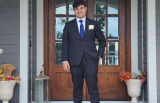Outdoor Activities May Increase Risk of Exfoliation Syndrome in Eyes
ByPeople who spend a lot of time outside have a higher risk of developing a common eye disease that can lead to an increased risk of cataract and cataract surgery complications, according to a recent study.
Researchers from Harvard University found Residential geography, time spent in the sun, and whether or not sunglasses are worn may help explain why some people develop exfoliation syndrome (XFS), an eye condition that is a leading cause of secondary open-angle glaucoma.
"The discovery that common genetic variants in the lysyl oxidase-like 1 gene (LOXL1) are associated with 99 percent of XFS cases represented a significant advance in our understanding of this condition," Louis Pasquale, lead author of the study, said in a statement. "However, 80 percent of control individuals also harbor these variants and that ratio of cases to control individuals with trait-related variants is fairly similar in regions where XFS is very prevalent and in regions where the condition is relatively rare; this suggests that other genetic or environmental factors contribute to XFS."
Previous studies have shown that residential geographic history and extent of solar exposure may be important risk factors for XFS. However, detailed lifetime solar exposure had not previously been evaluated.
For the study, researchers conducted a clinic-based, case-control study in the United States and Israel, involving XFS cases and control individuals enrolled from 2010 to 2012. They measured weighted lifetime average latitude of residence and average number of hours per week spent outdoors as determined by validated questionnaires.
They found that "each degree of weighted lifetime average residential latitude away from the equator was associated with an 11 percent increased odd of XFS." Furthermore, every hour per week spent outdoors during the summer, averaged over a lifetime, was associated with a 4 percent increased odds of XFS. For every 1 percent average lifetime summer time between the hours of 10 a.m. and 4 p.m. that sunglasses were worn, the odds of XFS decreased by 2 percent in the United States.
"Lifetime outdoor activities may contribute to XFS," Pasquale said. "The association between work over snow or water and the lack of association with brimmed hat wear suggests that ocular exposure to light from reflective surfaces may be an important type of exposure in XFS etiology. If confirmed in other studies, there could be reason to consider more widespread use of UV-blocking eyewear in these cases to help prevent XFS."
The findings were recently published in JAMA Ophthalmology.
© 2025 University Herald, All rights reserved. Do not reproduce without permission.








